Columns
Fighting droughts locally
We need a community-level ‘water husbandry’ movement to address the water problem.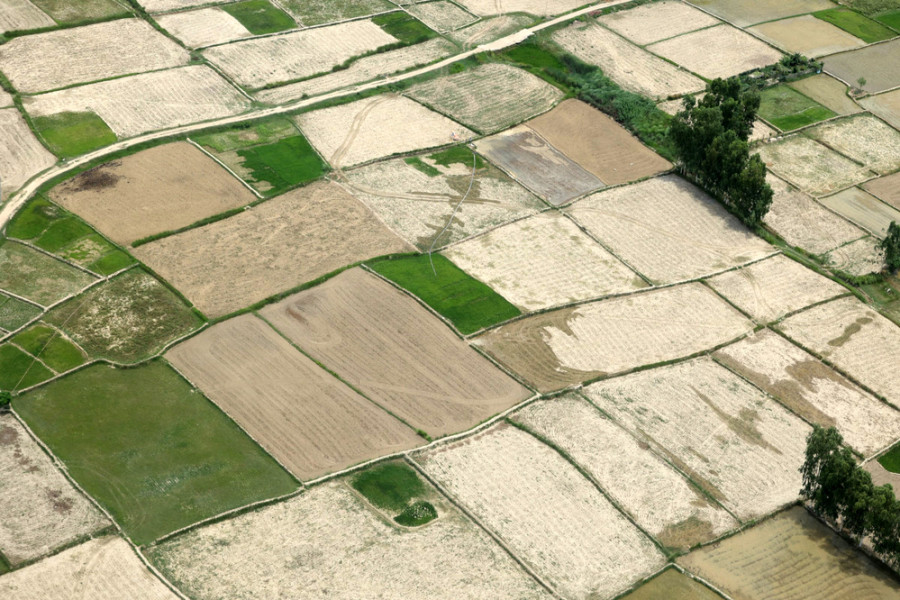
Madhukar Upadhya
After six frantic weeks of a dry monsoon, it finally rained in Tarai on August 1, offering some relief to farmers who had nearly given up hope of planting rice this year. However, the drought story isn’t new, nor is it limited to Tarai alone. What’s happening in the region is just the tip of the iceberg of what communities across the country have experienced in recent decades.
The 2022 Climate Change survey identified droughts as Nepal’s most pressing environmental challenge, with the country’s water sources dwindling in the last 25 years. Springs and rivulets are drying up in the mountains, and groundwater levels are dropping significantly in Tarai. One is compelled to confront the possibility that a large part of the country is becoming increasingly drier. If true, this trend signals that we are facing an extraordinary challenge ahead, unlike any we have faced in the past, necessitating the implementation of measures that transcend conventional water management and embrace ‘water husbandry’. It is a new way to manage depleting water resources with care, efficiency and sustainability.
Water husbandry is a way of nurturing our water resources, such as rivers, rivulets, lakes and aquifers, with the same care a farmer shows to their land or livestock to ensure sustainable water for generations. It involves minimising water waste, optimising its use, harvesting and storing rainwater or other forms of water to augment aquifers and adopting practices that reduce consumption while maximising benefits. These actions promote sustainable development and environmental protection. It also helps adapt to changing precipitation patterns, water scarcity and floods, eventually balancing human needs with ecological sustainability.
Weighing the evidence
This year’s delayed rain revealed how serious Nepal’s water problem has become and prompted the government to declare Madhesh a drought-stricken region. The severity of the impact revived the decade-old inconclusive debate about the causes of falling groundwater levels, which is generally centred around two different perspectives.
The dominant one, shared by many, including environmentalists, is that deforestation and mining of sand and gravel in the Chure area have reduced groundwater replenishment, subsequently depleting groundwater levels. Based on this assumption, the government launched a dedicated Chure conservation programme in 2010, broadly aimed at saving Tarai Madhesh from becoming arid. Alas, after 15 years of the said conservation work in Chure, there has yet to be credible evidence of measurable improvements in groundwater levels, which are now painfully exposed by the delayed rain.
Others, however, argue that linking deforestation, excessive sand and gravel mining in Chure to depleting groundwater is simply an overexaggeration. Hydrogeological knowledge is crucial to understanding groundwater. The geological strata of Chure often dip northward due to the tectonic forces associated with the Himalayan orogeny, where the Indian plate is continually colliding with the Eurasian plate. After which most of the infiltrated rainwater flows towards the north and joins other streams that feed into major rivers. The ephemeral streams originating in Chure that flow south die with the withdrawal of the monsoon, contributing very little to groundwater replenishment.
Barring seasonal recharge of groundwater through seepage from farms and other water bodies during the monsoon, most groundwater recharge in Tarai occurs in the Bhabar region, through which pass all major rivers in Nepal, replenishing groundwater every second. Further, a crucial aspect generally overlooked when discussing the fall of the groundwater table is the shared use of groundwater across the border, where high water demand accelerates its rapid decline. Assuming that the vast groundwater reserve of the Gangetic plain, of which Tarai is but a part, is recharged by Chure water, which exceeds reasonable hydrological limits and thus requires rigorous study to establish the facts.
Looming outsized challenges
The country’s water regime is likely to decline further due to unexpected ongoing developments. First, over recent years, the monsoon and winter rains have become increasingly concentrated in the western Himalayas. For example, extreme weather in Uttarakhand, India, doubled from 33 percent of monsoon days in 2022 to 65 percent in 2025, while Nepal experienced mixed results. We received below-average rain in 2022 and 2023 and above-average rain in 2024. Additionally, winter rain shows a further disturbing shift. Winters, responsible for bringing a fifth of the annual precipitation in the country, have been continually dry since 2022, except in far-western Nepal, whereas Uttarakhand received 60 percent more winter rain in 2022. Even in 2023 and 2024, it only saw a deficit of 60 percent and 50 percent, respectively. It may be too early to establish a trend, but it’s unlikely to be a mere pulse.
Second, the monsoon also seems to be shifting to the north, with initial studies from Pakistan indicating that it could reduce the rain in the southern plains in the years ahead. Delayed monsoon rain in Tarai could be an early sign of that northward shift. Additionally, declining winter precipitation remains a concern due to diminished snow deposits on the high mountains—a vital water source for our rivers that feed the basin’s groundwater reserve in the hot summer months. If the shifting monsoons and dry winters continue, the demand on our already-depleting groundwater will only heighten, requiring greater care for our water sources.
Third, terrestrial water, such as rivers, lakes, groundwater and soil moisture, is decreasing globally. Dry regions are expanding by more than 800,000 square kilometres a year. Freshwater availability is shrinking. Researchers fear it’s irreversible because to replenish lost surface and groundwater sources, we must get well-distributed above-average rain continually for over 10 years—an extremely unlikely scenario, given the current changes in our precipitation pattern.
Furthermore, a significant emerging change, due to decreasing aerosols and cloud cover, is the reduction in the reflection of sunlight by clouds (lower albedo). Aerosols serve as a critical component for water vapour to condense or freeze, forming cloud droplets. Decreasing aerosols result in fewer clouds with altered precipitation patterns, intensifying water stress in regions such as the Tarai and hills that are already facing water shortages. This will further deepen the urgency for embracing ‘water husbandry’.
Fighting droughts locally
The unforeseen developments mentioned above illustrate an accelerated shift in the fundamentals of weather patterns. The simultaneously warmer, drier and wetter conditions will continue to astonish and perplex in the coming days. Drying springs and rivulets in the hills and mountains and the falling water table in the Tarai are part of this large-scale change, signalling mounting challenges ahead. Conventional ways of addressing water shortages by opting for alternatives such as installing deep tube wells or limited projects with recharge infrastructures will be woefully insufficient because these changes are occurring quite rapidly and at scale. Now, we need a community-level movement of water husbandry to address what we have only begun to witness. As the climate crisis increasingly strains water resources, we must embrace this mindset to protect our future.




 15.12°C Kathmandu
15.12°C Kathmandu


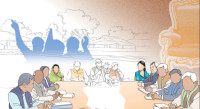
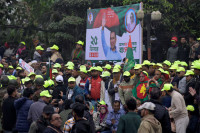

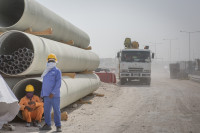
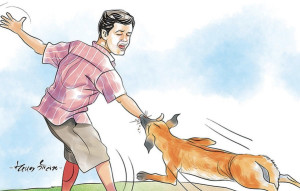


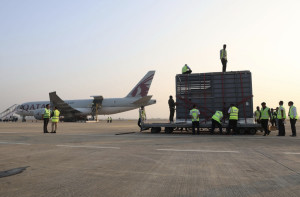



%20(1).jpg&w=300&height=200)

